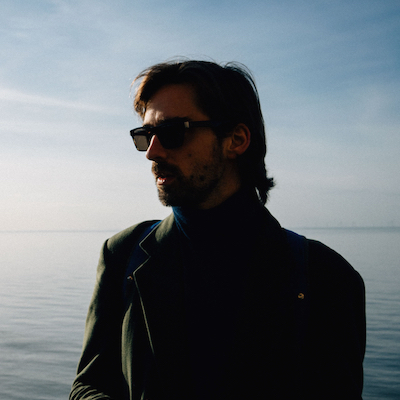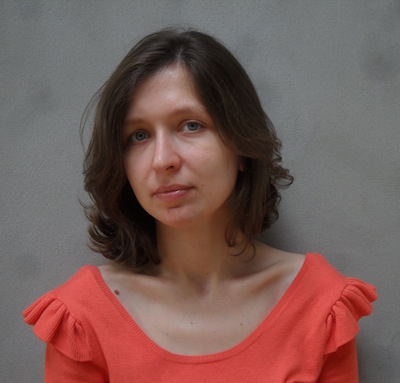Vogue Poland: why the iconic magazine’s first Polish cover has proven so controversial
Two Warsaw writers explain the political and cultural background to the debate that has erupted around Jürgen Teller’s Palace of Culture cover shoot
This week saw the launch of Vogue Poland — only the third iteration of the iconic magazine in eastern Europe. The inaugural cover shoot, staged by Jürgen Teller outside Warsaw’s Stalinist-era Palace of Culture and Science, sparked controversy within the country. We asked two Varsovian writers for their take on Vogue’s arrival and the debate its cover has provoked around national representation, class and aesthetics.
“This was a wonderful clash between the expectations of the public and the aesthetic tastes of the intelligentsia”
This is a strange moment for the Polish edition of Vogue to arrive; the nation’s right-wing government has spent the last two and a half years dismantling consecutive elements of the democratic state and bringing us to international shame — notably through a recent anti-Semitic law criminalising the attribution to the Polish state of complicity in the Holocaust. And yet, in a way, the timing is perfect: as social inequalities in Poland grow harsher and harsher, the “market for luxury goods” is developing — as the publisher candidly admits — and so Vogue, the ultimate symbol of luxury, can finally be brought to the Polish public.
So what to make of the fact that the highly anticipated cover of the first issue, by Jürgen Teller, depicts the two most successful Polish supermodels of the last two decades, Małgorzata Bela and Anja Rubik, dressed in gothic black, cast against the Stalinist Palace of Culture and Science in the vast, Communist-era square in the very centre of Warsaw; or that they’re posed with a black Volga — associated first with the Soviet car industry and now with the omnipresent smog afflicting ecology-neglecting, car-obsessed turbocapitalist post-communist countries? The Polish internet and social media had a bit of a meltdown. The reaction was a combination of hurt aesthetic feelings and wounded national pride: how come the ultimate symbol of luxury we were promised is not a glossy image of our country’s recent success, but an apotheosis of the bygone Soviet era we so much wanted to forget? And a symbol of our failure? To add insult to injury, it’s by a German photographer, with the kind of wonky, imprecise composition “my kid could capture better on a school trip”. “Nothing there is ours,” one commentator said. “Not the palace, not the car, not anything.”
This was a wonderful clash between the expectations of the public and the aesthetic tastes of the intelligentsia. The middle classes, at whom the magazine is directed, seem to be broadly unaccepting, are even unaware of the fact that we Poles might still be perceived as “post-Soviet” abroad. And, more to the point, that the sensibilities of the world of fashion in the last few years have been wrapped up in the idea of exoticised “post-Soviet” aesthetics, best symbolised by the designs of Gosha Rubchinskiy and Demna Gvasalia of the equally cult and annoying Vetements.
In reality, the “poor but sexy” chic of Vetements doesn’t match the perception that broader Polish society has of itself as aspirational, westernised and still on the make. Most Poles would rather have something along the lines of Vanity Fair: photoshopped, heavy on bling and celebrity, heralding our eventual “arrival”. This is only the third international edition of Vogue in eastern Europe: the first was Russia in 1998, confirming the dominant role of the former Soviet hegemon in the region. The second came, surprisingly, in Ukraine; before Maidan, but under the now much-hated Viktor Yanukovych. For the Polish edition to start so “late” (relatively speaking) may speak volumes about our society — in terms of our consumerist potential, we’ve clearly only just been deemed “ready”. Adding to the symbolism, the publisher of the magazine is Kasia Kulczyk, daughter-in-law of the late Jan Kulczyk, formerly the richest man in Poland, who had a huge influence on the development of Polish capitalism, with its privatisation and asset-stripping.
Poland is a post-communist country with growing inequalities that may look picturesque in a fashion shoot but also stand as an indictment of the capitalist dream
And yet in this photoshoot Teller, himself a pioneer of “riches-to-rags” aesthetics seems to tell a different story. Here, we have Rubik posing on a pile of potatoes on the Palace’s marble floor, and side-by-side with famous Poles — first among them ex-president Lech Wałęsa — personally selected by Teller. Seemingly, the Polish edition of the magazine needs to feature luxurious symbols of communism’s collapse, while simultaneously drawing on most banally aestheticised symbols of eastern drabness: we have pictures of pierogi and oysters next to each other, and a pair of Jimmy Choo stilettos drowned in mud. The uproar that this confused “Soviet chic” has caused shows how at odds the aspirations of Poland’s creative classes and intelligentsia — capable of appreciating a degree of subversion in a cover shoot — are with what the nation’s public really wants.
Poland is a post-communist country with growing inequalities (or, euphemistically, “contrasts”) that may look picturesque in a fashion shoot but also stand as an indictment of the capitalist dream. Hence the negative reactions. This is a world where the middle classes, losing money on credit they’ll never pay back, at least want compensation for their efforts in the form of a beautiful magazine. What they get instead is an aestheticised slap in the face, the let-them-eat-cake Marie Antoinette attitude of the upper class, one percenters who can afford such nonchalance.
“The Palace itself has steadily become a symbol and terrain for the contestation of the reigning political order”

People in Warsaw sometimes bemoan that their city suffers from a “Palace Complex”: that, actually or metaphorically, Warsaw is unable to overcome its pathological fixation on the Palace of Culture and Science — a gargantuan, Moscow-style Stalinist skyscraper gifted to the Polish capital in 1955 — and become a “normal” European city. To over-simplify, those Varsovians who dislike the Palace and want it demolished or diminished accuse its defenders of suffering from one kind of Palace Complex (an unhealthy, servile obsession with the Palace, and with the Soviet communism and foreign domination it connotes); while those positively-disposed accuse the detractors of suffering from a different kind of Palace Complex (a reductive fixation on one object, with the Palace functioning as a sort of totem onto which all manner of Polish paranoias and provincialisms are projected).
The intensity of this debate has spiralled in the past two years, under the reign of the rightwing nationalist Law and Justice party. Since its surprise dethronement of the long-ruling Europhile liberal conservatives in November 2015, Law and Justice has embroiled itself in an all-out struggle to crush what it perceives to be lingering communist influences pervading the country’s political, economic and legal system and tainting its ideological and symbolic landscape. Judges and state media executives have been purged, sexual freedom has been curtailed, refugees have been kept out, Brussels (“the new Moscow”) has been rebuffed, and attempts have been made to institute a total ban on abortion.
In January 2016, the newly-appointed director of the state TV network (TVP) made the first grand symbolic gesture in Poland’s de-communisation crusade, purging the Palace of Culture from the backdrop of the state TV network flagship news programme, and replacing it with the Royal Castle. In April 2016, the Polish parliament turned de-communisation into law, passing a decree requiring all streets, public spaces and monuments associated with the communist period to be renamed or removed.
Although the Palace constitutes by far the largest and most tangible marker of Poland’s communist part, its physical body initially seemed relatively immune to Poland’s de-communising excesses. By 14 November 2017, however — several days after 60,000 nationalists and neo-fascists marched through Warsaw to mark Polish Independence Day, carrying Islamophobic and anti-Semitic banners and chanting obscene slogans — several government ministers made loud public declarations calling for its demolition. In the words of finance minister (and now Prime Minister) Mateusz Morawiecki: “I am absolutely for this, that this relic of communist domination would disappear from the centre of Warsaw… I have been dreaming of this for 40 years.” A defence minister chimed in to confirm that the Polish Army would be up to the task of destroying the Palace: “I think this would be a cool training exercise for our soldiers.”
In Poland, the subversive political potential with which the Palace is imbued is so easily ironised, sexualised and commodified
Parade Square, where the Palace stands, has not frequently been used as a site of political protest since 1989. (Manifa, Poland’s annual women’s march — whose 2017 edition was the largest ever, in the wake of Law and Justice’s multiple misogynistic upheavals — has traditionally gathered outside the Palace of Culture, marching from there to the Polish parliament.) On 19 October 2017, one month before the awakening of Law and Justice’s demolitionist zeal, a man doused himself in flammable liquid and set himself on fire on the square in front of the main entrance to the Palace. He died in hospital ten days later. Before setting himself alight, he threw several copies of a highly politicised suicide note into the air, which presented a series of 15 postulates protesting against Law and Justice’s attacks on the constitution and the natural environment, its xenophobia, homophobia and sexism, its neglect of the health-service, cronyism and over-centralisation of the state. Since the election of Law and Justice, then, the Palace itself and the terrain around it have steadily become imbued with an intensifying agonistic energy, as a symbol and terrain for the contestation of the reigning political order.
Such is the maelstrom into which Jürgen Teller’s Vogue Polska cover waded. Beyond the Palace itself, it features a Soviet-connoting Black Volga, paradigmatically post-Soviet grey skies and supermodel Anja Rubik, who has been actively and effectively campaigning against Law and Justice’s misogynistic and homophobic politics since their ascension to power. It constitutes an attempt by the editors of Vogue to demonstrate their rejection of the current regime’s paranoid attitudes to history, sex and national identity. What makes the cover depressing, however, is not the monochrome colouring and grey skies. It is the fact that in Poland — the only country in Europe without any leftwing representation in parliament — the subversive political potential with which the Palace is imbued is so easily ironised, sexualised and commodified. This, for now, is the fate of the Palace Complex in the leftless country.
Text: Agata Pyzik and Michał Murawski
